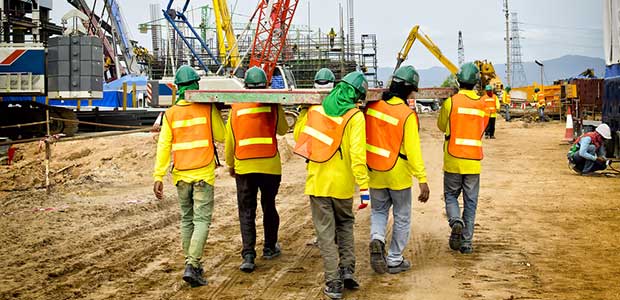
NIOSH Study Looks at Health Risk Behaviors among Construction Workers
A recent study looked at the top risk behaviors among workers in construction, and the results indicate that construction workers may benefit from targeted interventions and health programs to address workplace-specific hazards.
Construction is a physically demanding industry, and workers are exposed to a number of risks by the nature of their job—including physical, chemical and environmental factors. According to the CDC, falls are the leading cause of death in construction, accounting for about one-third of the total number of fatalities in the industry.
A recent study by the National Institute of Occupational Safety and Health (NIOSH) looks at the common behaviors among construction workers that contribute to higher health risks. The Journal of Occupational and Environmental Medicine published the study.
Other studies have suggested that construction workers who exhibit certain unhealthy behavior may be even more likely to experience work-related injuries.
The NIOSH study surveyed 38 different construction occupations, including laborers, project managers, those in construction trades, and contractors. It was conducted by telephone across 32 states, from 2013 to 2016.
The study looked specifically at six health risk behaviors among workers in construction compared to workers in other industries. The main findings showed:
- Smoking, smokeless tobacco use, binge drinking, no leisure-time physical activity, and not always using a seatbelt were significantly more prevalent among construction workers than in the general workforce.
- A sixth health risk behavior, getting less than seven hours of sleep a day, was significantly less prevalent among construction workers as compared to the general workforce.
- Construction managers had elevated prevalences for smoking, smokeless tobacco use, binge drinking, and not always using a seatbelt.
- Because of their important leadership roles, behavior changes among construction managers could have positive effects on the safety and health culture in the construction industry.
- Carpenters, construction laborers, and roofers all had significantly elevated prevalences for five of the six behaviors (all except short sleep).
- Roofers, as well as electrical power-line installers and repairers, had significantly elevated prevalences for binge drinking.
- Operating engineers, who operate and maintain heavy earthmoving equipment, had very high rates for smokeless tobacco use.
Construction workers are also often exposed to heat-related illnesses, especially in warmer months. They are also more likely to deal with mental illnesses and abuse other substances like opioids or other drugs, for a number of reasons.
NIOSH suspects that construction workers could benefit from targeted interventions and health programs specific to their workplace hazards because of the high prevalence of certain health risk behaviors.
To read more of NIOSH’s research in construction, please click here.